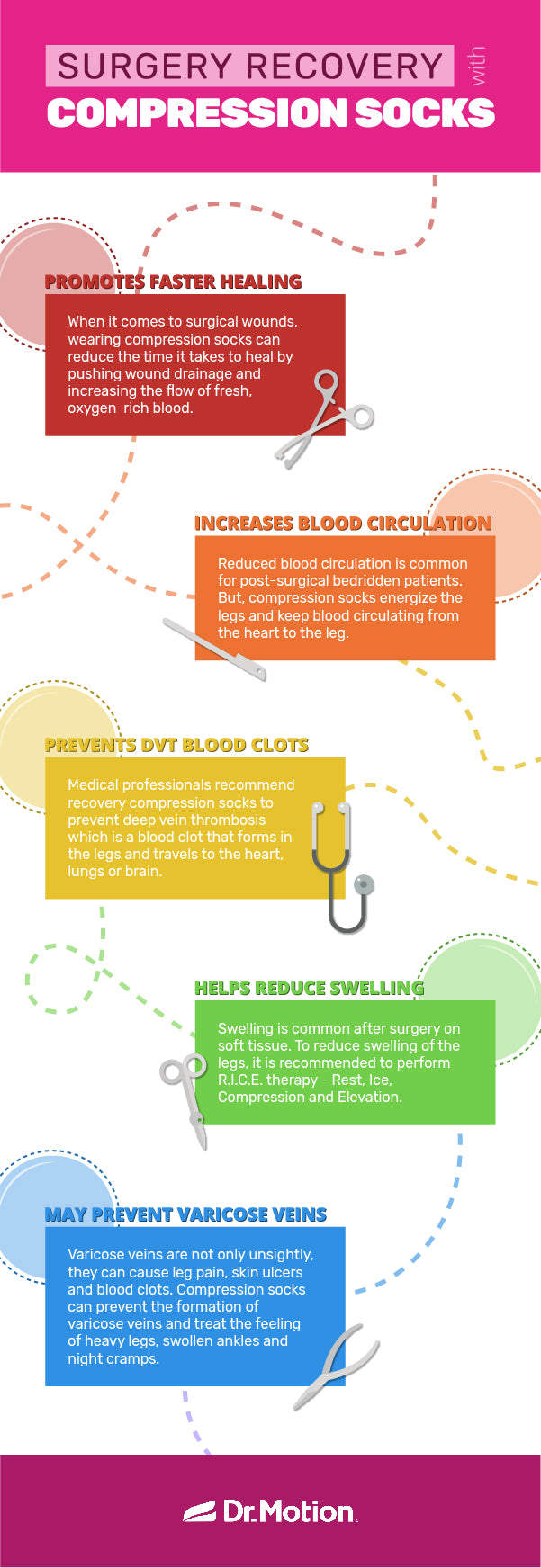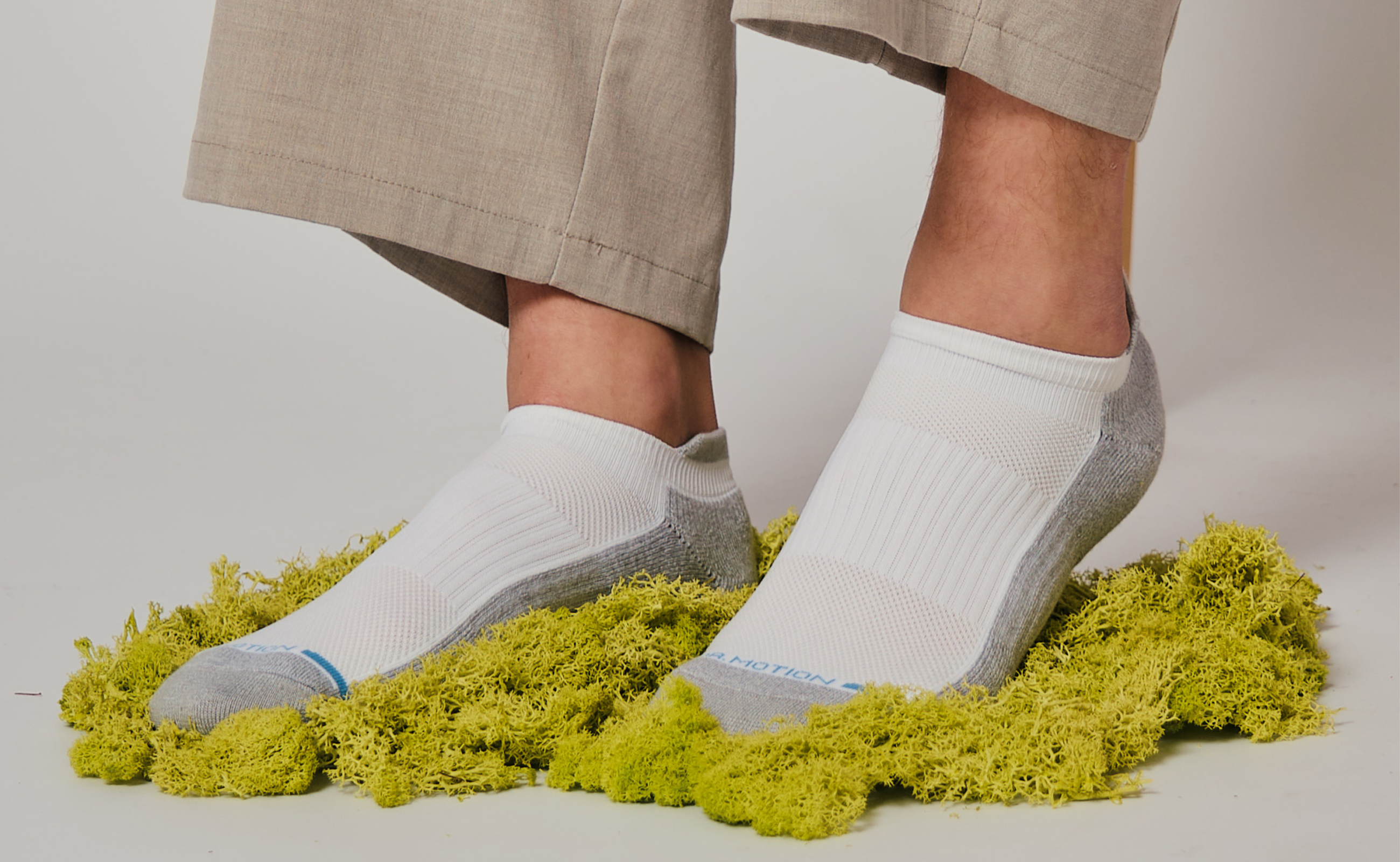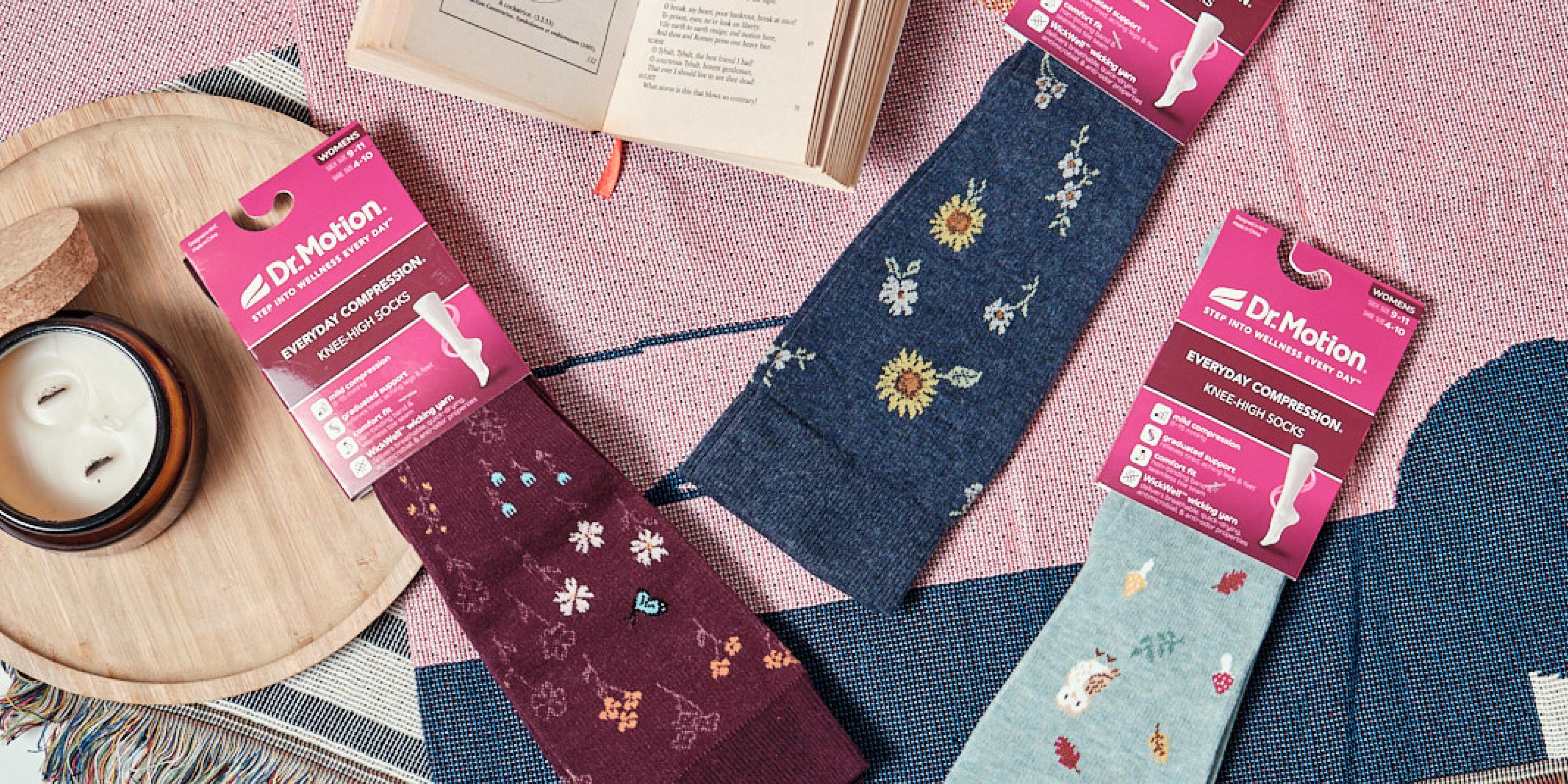Surgery Recovery and Compression Socks
After surgery, patients are watched carefully to monitor complications and patient discomfort. The two common post-surgical problems that can happen after surgery are directly related to blood flow or blood oxygen levels. One of these is blood clots that can detach from veins, travel to the lungs and cut off blood flow, also known as pulmonary embolism, or PE.

The other is characterized by blood clots and clumping that will essentially block the flow of blood through vessels or break free as a blood clot in the lungs, brain, heart, or extremities. This is also known as Deep Vein Thrombosis or DVT.
Post-surgical problem nurses will look for symptoms of DVT and PE. They will also put prevention measures in place, which include recovery compression socks, leg compression machines, along leg exercises such as knee bends and leg lifts.
Post Surgical Blood Flow Problems
- Pulmonary embolism or (PE): A blood clot in the lungs is called a pulmonary embolism or (PE). Typically, PE is caused by a blood clot that formed elsewhere in the body and makes its way to the lungs. This condition will cause chest pain, trouble breathing and can be fatal if not treated with a blood thinner or other medical procedure.
- Deep Vein Thrombosis or DVT: DVT or deep vein thrombosis is a condition that is caused by blood that is traveling too slowly through the body. When this happens, the red blood cells tend to clump together, causing a blood clot deep within a vein. DVT most often occurs in the lower leg, thigh or pelvis. DVT can also be fatal with early symptoms that include soreness, swelling or pain in the legs or arms along with a reddish or bluish tint to the skin.
Do compression socks help recovery?
Yes, medical-grade stockings or graduated compression socks will help patients recover after surgery. This is especially true because patients are bed-ridden for many hours of the day after surgery.

This lack of walking and movement means it is more difficult for your blood to circulate, especially from the legs and back to the heart. Recovery compression socks reduce the chance of blood pooling in your lower limbs or circulating so slowly that the blood will clot.
Here are 5 ways that wearing graduated compression socks will help in post-surgical recovery:
Promotes faster healing
When it comes to surgical wounds, wearing compression socks can reduce the time it takes to heal by pushing wound drainage and increasing the flow of fresh, oxygen-rich blood.
Increases blood circulation
Reduced blood circulation is common for post-surgical bedridden patients. But, compression socks energize the legs and keep blood circulating from the heart to the leg.
Prevents DVT blood clots
Medical professionals recommend recovery compression socks to prevent deep vein thrombosis which is a blood clot that forms in the legs and travels to the heart, lungs or brain.

Helps reduce swelling
Swelling is common after surgery on soft tissue. To reduce swelling of the legs, it is recommended to perform R.I.C.E. therapy - Rest, Ice, Compression and Elevation.
May prevent varicose veins
Varicose veins are not only unsightly, they can cause leg pain, skin ulcers and blood clots. Compression socks can prevent the formation of varicose veins and treat the feeling of heavy legs, swollen ankles and night cramps.
Many medical professionals will recommend that patients wear compression socks if confined to a bed or to sleep in compression socks after surgery. This will help manage symptoms of swelling, reduced blood flow and help prevent the development of blood clots in the leg.
Takeaways
- DVT or deep vein thrombosis is a condition that is caused by blood that is traveling too slowly through the body.
- A blood clot in the lungs is called a pulmonary embolism or (PE) which can be fatal if not treated immediately.
- Graduated compression socks will help patients recover faster after surgery due to good blood flow.
Visit us at Dr. Motion for a wide variety to stylish graduated compression socks that are perfect for post-surgical recovery.
Disclaimer: This article provides information solely for educational purposes, including but not limited to text, graphics, images, and other materials contained herein. This article is not intended to substitute for professional medical advice, diagnosis, or treatment. Always seek the advice of your physician or another qualified healthcare provider with any questions you may have regarding a medical condition.











